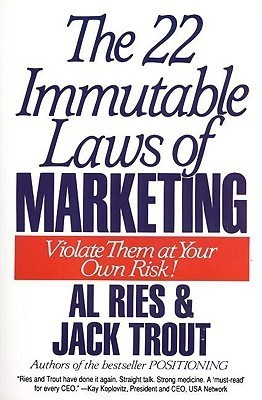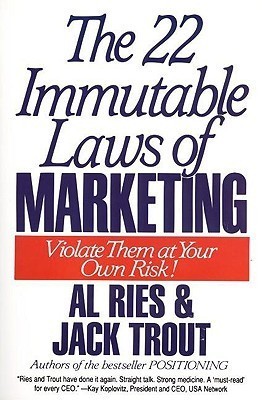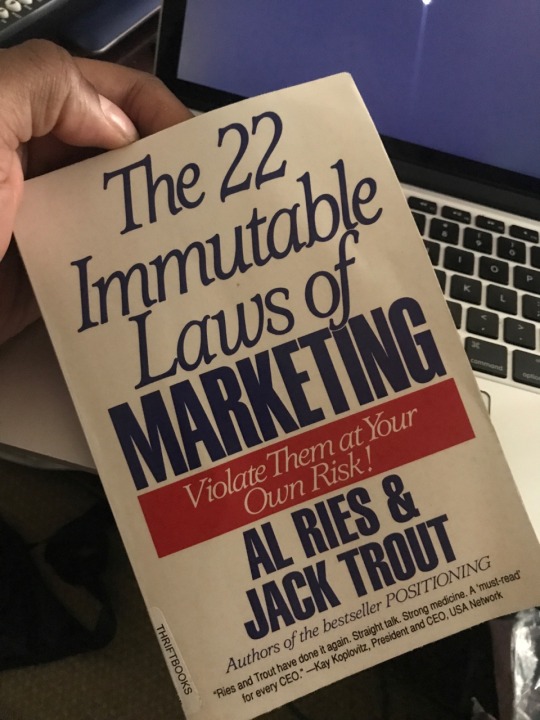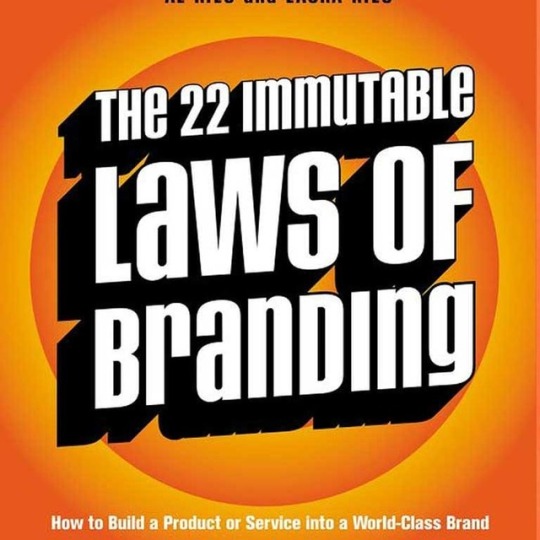#22 immutable laws of marketing
Text
Captain’s Log
Stardate 202404
Day 42
So here’s some more weirdness. I published a flier about an upcoming essay competition. It’s free and from a respected organization so I expected it to generate some interest, but I got crickets. A few parents asked about it, but they were not enthusiastic. I brought them into a group and nobody asked anything. Even when I post information, I get nothing—not even a thank you.
Analyzing it later, I realized my mistake. It’s like Simon Sinek’s “Start With Why.” I tried to tell the world what amazing product I had found. I even used Dan Ariely’s magic of free, but the world responded, “Meh.”
New strategy. Appeal to the people kind of people I want. Forget everyone else. Such a waste of energy.
It’s a public holiday today and it’s rainy, so the internet is jam-packed. The boys are having major lag, and the VPN is glitching. I’ve been interrupted to do IT support about a dozen times already so I’m pretty frustrated. Coffee is helping but not enough.
Today’s goal is to finish 22 Immutable Laws of Marketing, to redesign my poster and to try again. I’m going to look for a cool color palate and use text only. I’ll post my original here today and the new one tomorrow so you can see the progression.
Oh. The VPN is glitching—which mean’s I’m not posting anything today. See you with a double post tomorrow.

#alternative education#homeschool#online education#china#marketing#coffee#22 immutable laws of marketing#poster design#strategicmarketing#simon sinek#dan ariely
0 notes
Text
3 Questions: Shaping the future of work in an age of AI
New Post has been published on https://sunalei.org/news/3-questions-shaping-the-future-of-work-in-an-age-of-ai/
3 Questions: Shaping the future of work in an age of AI


The MIT Shaping the Future of Work Initiative, co-directed by MIT professors Daron Acemoglu, David Autor, and Simon Johnson, celebrated its official launch on Jan. 22. The new initiative’s mission is to analyze the forces that are eroding job quality and labor market opportunities for non-college workers and identify innovative ways to move the economy onto a more equitable trajectory. Here, Acemoglu, Autor, and Johnson speak about the origins, goals, and plans for their new initiative.
Q: What was the impetus for creating the MIT Shaping the Future of Work Initiative?
David Autor: The last 40 years have been increasingly difficult for the 65 percent of U.S. workers who do not have a four-year college degree. Globalization, automation, deindustrialization, de-unionization, and changes in policy and ideology have led to fewer jobs, declining wages, and lower job quality, resulting in widening inequality and shrinking opportunities.
The prevailing economic view has been that this erosion is inevitable — that the best we can do is focus on the supply side, educating workers to meet market demands, or perhaps providing some offsetting transfers to those who have lost employment opportunities.
Underpinning this fatalism is a paradigm which says that the factors shaping demand for work, such as technological change, are immutable: workers must adapt to these forces or be left behind. This assumption is false. The direction of technology is something we choose, and the institutions that shape how these forces play out (e.g., minimum wage laws, regulations, collective bargaining, public investments, social norms) are also endogenous.
To challenge a prevailing narrative, it is not enough to simply say that it is wrong — to truly change a paradigm we must lead by showing a viable alternative pathway. We must answer what sort of work we want and how we can make policies and shape technology that builds that future.
Q: What are your goals for the initiative?
Daron Acemoglu: The initiative’s ambition is not modest. Simon, David, and I are hoping to make advances in new empirical work to interpret what has happened in the recent past and understand how different types of technologies could be impacting prosperity and inequality. We want to contribute to the emergence of a coherent framework that can inform us about how institutions and social forces shape the trajectory of technology, and that helps us to identify, empirically and conceptually, the inefficiencies and the misdirections of technology. And on this basis, we are hoping to contribute to policy discussions in which policy, institutions, and norms are part of what shapes the future of technology in a more beneficial direction. Last but not least, our mission is not just to do our own research, but to help build an ecosystem in which other, especially younger, researchers are inspired to explore these issues.
Q: What are your next steps?
Simon Johnson: David, Daron, and I plan for this initiative to move beyond producing insightful and groundbreaking research — our aim is to identify innovative pro-worker ideas that policymakers, the private sector, and civil society can use. We will continue to translate research into practice by regularly convening students, scholars, policymakers, and practitioners who are shaping the future of work — to include fortifying and diversifying the pipeline of emerging scholars who produce policy-relevant research around our core themes.
We will also produce a range of resources to bring our work to wider audiences. Last fall, David, Daron, and I wrote the initiative’s inaugural policy memo, entitled “Can we Have Pro-Worker AI? Choosing a path of machines in service of minds.” Our thesis is that, instead of focusing on replacing workers by automating job tasks as quickly as possible, the best path forward is to focus on developing worker-augmenting AI tools that enable less-educated or less-skilled workers to perform more expert tasks — as well as creating work, in the form of new productive tasks, for workers across skill and education levels.
As we move forward, we will also look for opportunities to engage globally with a wide range of scholars working on related issues.
0 notes
Text
3 Questions: Shaping the future of work in an age of AI
New Post has been published on https://thedigitalinsider.com/3-questions-shaping-the-future-of-work-in-an-age-of-ai/
3 Questions: Shaping the future of work in an age of AI


The MIT Shaping the Future of Work Initiative, co-directed by MIT professors Daron Acemoglu, David Autor, and Simon Johnson, celebrated its official launch on Jan. 22. The new initiative’s mission is to analyze the forces that are eroding job quality and labor market opportunities for non-college workers and identify innovative ways to move the economy onto a more equitable trajectory. Here, Acemoglu, Autor, and Johnson speak about the origins, goals, and plans for their new initiative.
Q: What was the impetus for creating the MIT Shaping the Future of Work Initiative?
David Autor: The last 40 years have been increasingly difficult for the 65 percent of U.S. workers who do not have a four-year college degree. Globalization, automation, deindustrialization, de-unionization, and changes in policy and ideology have led to fewer jobs, declining wages, and lower job quality, resulting in widening inequality and shrinking opportunities.
The prevailing economic view has been that this erosion is inevitable — that the best we can do is focus on the supply side, educating workers to meet market demands, or perhaps providing some offsetting transfers to those who have lost employment opportunities.
Underpinning this fatalism is a paradigm which says that the factors shaping demand for work, such as technological change, are immutable: workers must adapt to these forces or be left behind. This assumption is false. The direction of technology is something we choose, and the institutions that shape how these forces play out (e.g., minimum wage laws, regulations, collective bargaining, public investments, social norms) are also endogenous.
To challenge a prevailing narrative, it is not enough to simply say that it is wrong — to truly change a paradigm we must lead by showing a viable alternative pathway. We must answer what sort of work we want and how we can make policies and shape technology that builds that future.
Q: What are your goals for the initiative?
Daron Acemoglu: The initiative’s ambition is not modest. Simon, David, and I are hoping to make advances in new empirical work to interpret what has happened in the recent past and understand how different types of technologies could be impacting prosperity and inequality. We want to contribute to the emergence of a coherent framework that can inform us about how institutions and social forces shape the trajectory of technology, and that helps us to identify, empirically and conceptually, the inefficiencies and the misdirections of technology. And on this basis, we are hoping to contribute to policy discussions in which policy, institutions, and norms are part of what shapes the future of technology in a more beneficial direction. Last but not least, our mission is not just to do our own research, but to help build an ecosystem in which other, especially younger, researchers are inspired to explore these issues.
Q: What are your next steps?
Simon Johnson: David, Daron, and I plan for this initiative to move beyond producing insightful and groundbreaking research — our aim is to identify innovative pro-worker ideas that policymakers, the private sector, and civil society can use. We will continue to translate research into practice by regularly convening students, scholars, policymakers, and practitioners who are shaping the future of work — to include fortifying and diversifying the pipeline of emerging scholars who produce policy-relevant research around our core themes.
We will also produce a range of resources to bring our work to wider audiences. Last fall, David, Daron, and I wrote the initiative’s inaugural policy memo, entitled “Can we Have Pro-Worker AI? Choosing a path of machines in service of minds.” Our thesis is that, instead of focusing on replacing workers by automating job tasks as quickly as possible, the best path forward is to focus on developing worker-augmenting AI tools that enable less-educated or less-skilled workers to perform more expert tasks — as well as creating work, in the form of new productive tasks, for workers across skill and education levels.
As we move forward, we will also look for opportunities to engage globally with a wide range of scholars working on related issues.
#ai#ai tools#Artificial Intelligence#automation#challenge#change#Collective#college#Computer science and technology#direction#economic#Economics#economy#education#employment#Faculty#form#framework#Future#how#Ideas#immutable#Inequality#INterview#investments#issues#it#jobs#Labor and Jobs#labor market
0 notes
Text
Book Summary: The 22 Immutable Laws of Branding
In "The 22 Immutable Laws of Branding," Al Ries and Laura Ries present a definitive guide to constructing a world-class brand. Drawing from their extensive expertise in marketing and branding, the authors lay down 22 essential principles that transcend industries and time.
This influential book underscores the significance of a powerful brand identity and explores the critical aspects of positioning, differentiation, and consistency. Packed with real-world examples and practical insights, it offers readers a roadmap to create enduring brands that resonate with consumers and stand the test of time in an ever-evolving marketplace.
Read more
0 notes
Text
The 22 Immutable Laws of Marketing: Violate Them at Your Own Risk - Al Ries
0 notes
Video
youtube
Nipsey Put YG on to a Marketing Gold Mine!
YG is a super talented artist and an Icon for the West Coast.
In this interview he speaks on how Nipsey Hussle gave him the know on some powerful stuff! An amazing book called “The 22 Immutable Laws of Marketing.” This book is a highly recommended book amongst Millionaires! Not only that YG a young successful artist is speaking on how it worked for him!
I also own the book and it is a game changer! no matter what level large or small this will take your skills and understanding of Marketing to a new level! Come over and watch this Podcast and enjoy the laughs and wisdoms this man has to share!
#nipsey hussle#yg entertainment#gold#wisdom#marketing#successstories#independence#entrepenureship#books & libraries#reading#takinginitive#interview#miketyson#podcast#hotboxin
0 notes
Text
Read PDF The 22 Immutable Laws of Marketing: Violate Them at Your Own Risk EBOOK BY Al Ries
Download Or Read PDF The 22 Immutable Laws of Marketing: Violate Them at Your Own Risk - Al Ries Free Full Pages Online With Audiobook.

[*] Download PDF Here => The 22 Immutable Laws of Marketing: Violate Them at Your Own Risk
[*] Read PDF Here => The 22 Immutable Laws of Marketing: Violate Them at Your Own Risk
0 notes
Text
Read The 22 Immutable Laws of Marketing: Violate Them at Your Own Risk EBOOK BY Al Ries
Download Or Read PDF The 22 Immutable Laws of Marketing: Violate Them at Your Own Risk - Al Ries Free Full Pages Online With Audiobook.

[*] Download PDF Here => The 22 Immutable Laws of Marketing: Violate Them at Your Own Risk
[*] Read PDF Here => The 22 Immutable Laws of Marketing: Violate Them at Your Own Risk
0 notes
Text
Captain’s Log
Stardate 20240405
Day 43
I’m tired this morning. I don’t want to fight with anybody today. I probably will have to, but I really don’t want to.
Round 1 just began.
I can’t do my writing assignment.
Why?
I don’t have any adventures.
…Hold your breath. Don’t respond…
I can’t do it.
Simon, that’s a ridiculous statement.
Why?
How many countries have you been to?
None.
China, America, Thailand, the Philippines. We are going to the Philippines in two weeks—and you don’t have any adventures?
I don’t.
You know how many people live their whole lives without ever leaving the country?
No.
A LOT. We just got back from a tour of four cities—Kunming, Dali, Lijiang, and Shangrila. Pick one.
I can’t. The only adventure I had was going to my friend’s house without permission and getting grounded.
Fine. Write about that.
I don’t want to tell people about that.
…Keep it together… Write about when you washed an elephant in Thailand.
I don’t know what to write.
Simon, how can you be so blind? Can you really not see how amazing your life is?
No. My life is boring.
…Deep breaths, deep breaths… I’m not going to talk with you about this anymore. Write something. Get the assignment done.
*He writes about candy in incomplete sentences*
AAAAAAAAAAAAAAAAAAH!
For a kid who talks non-stop, I don’t get why he is so averse to writing. Is it work? Yes. But still. I feel like any good I give to him is flushed down the toilet. I don’t do it for the appreciation, but when someone has an attitude like this, it’s impossible to keep good will. I don’t know what to do here. I’ve read all the parenting books. They don’t work. I’ve gone the whole spectrum from Dare to Discipline to 1-2-3 Magic to the warm fuzzies of the Whole Brain Child. None of it moves the needle. I am a professional educator, but my own kid can drive me to pulling my hair out. Maybe that’s why so many famous educators didn’t raise their own kids.
Lord, have mercy.
In other news, I’ve started a new advertising campaign. We’ll see how it goes.
Updated Reading list
Finished reading
Photo Portfolio Success
Teach Yourself Tumblr
Studio Anywhere
Combatting Cult Mind Control
Forgiveness Made Easy
How Do I Do that in Photoshop?
Start With No
The Blog Artist’s Handbook
Needless Casualties of War
Oppositional Defiant Disorder
Entreleadership
The Elijah Task
The Photographer’s Eye
The Speedlight Studio
22 Immutable Laws of Marketing
The 1921 Annual of Advertising Art
Vintage Advertising and Art Designs
Vintage Movie Posters
Vintage Advertising Posters
Almost finished reading
Best Business Practices for Photographers
Lightroom CC and Photoshop CC for Photographers
The Young Entrepreneur’s Guide to Starting and Running a Business
The Golden Age of Advertising—the 70’s

#alternative education#homeschool#online education#china#marketing#frustrated#parenting#reading list#adventure#travel#advertising
0 notes
Text


Recent Reads!
#thoughts#me#Reading#Good Reads#All About Love#Laws Of Marketing#Books#The 22 Immutables Laws Of Marketing#Bell Hooks#Al Ries
4 notes
·
View notes
Text
The 22 Immutable Laws of Marketing
finna sling product? up ya exposure brah.
YouTube: https://www.youtube.com/watch?v=kuCYel16p90
iTunes: https://podcasts.apple.com/us/podcast/nicks-non-fiction/id1450771426
SoundCloud: https://soundcloud.com/user-570445450/nicks-non-fiction-the-22-immutable-laws-of-marketing
#entertainment#humor#books#literature#nonfiction#podcast#comedy#marketing#digitalmarketing#advertising
1 note
·
View note
Text
Is sub-branding or rebranding always the way out?
I have been reading the ‘22 immutable laws of marketing’ and the book talks about how creating a new and separate brand for a new line of product(s) is a better strategy than pasting the main brand name on each product line. Take Coca Cola, for example. They have multiple products in the market but each with its own brand - Dasani, Fairlife, Simply, Maaza, Minute Maid etc. And compare this with GE which has its brand name pasted on each product line. Al and Jack argue, in the book, that Coca Cola’s strategy is better than GE’s.
With this context in mind, I read about Black and Decker, their product portfolio, and market performance in the 1980s and I am forced to think if only a new branding strategy would have solved the problem for B&D?
B&D was losing market share in the Professional-Tradesmen segment of power tools to Makita. But I feel that more than branding there actually was an issue with product quality. B&D’s own research showed that their saws and sanders were underdeveloped as compared to other brands, and they were merely competitive in drills. And these three segments accounted for 80% of the total market segment.
I think the answer to B&D’s problems would have been a combination of rebranding and improved tool quality.
1 note
·
View note
Text
22 Quy Luật Bất Biến Trong Marketing | Docsach24
22 Quy Luật Bất Biến Trong Marketing | Docsach24
22 Quy Luật Bất Biến Trong Marketing (The 22 Immutable Laws Of Marketing) là tác phẩm, công trình nghiên cứu công phu của hai tác giả Al Ries và Jack Trout, hai chuyên gia hàng đầu trong lĩnh vực marketing, cả hai đều là lãnh đạo của các công ty hàng đầu chuyên nghiên cứu và tư vấn chiến lược marketing.
Sau nhiều năm nghiên cứu và trải nghiệm thực tế, hai tác giả đã đúc kết ra cuốn sách 22 Quy…

View On WordPress
0 notes
Photo

The 22 Immutable Laws of Branding Visit https://www.divineworks.biz/creative-books/ #branding #brandingdesign #marketing #businessbranding https://www.instagram.com/p/BmgOt69l3H-/?utm_source=ig_tumblr_share&igshid=j213pfx6pzfp
3 notes
·
View notes
Text
Captain’s Log
Stardate 20240403
Day 42
So, there’s been a new development. Last night I was complaining to my wife about my lack of forward momentum on the business side. She pointed out that I am recreating myself at 40. How many people actually do that? Most people settle for buying something expensive and keep doing doing whatever it was that made them miserable. She pointed out that marketing, advertisement design, and professional photography, are all new fields for me. I should be making a ton of mistakes.
When I started teaching, I arrogantly assumed that I knew what I was doing until I met with gross public humiliation. Once I hit that point, I was willing to listen and started growing.
Apparently, I haven’t changed much. In entrepreneurship, it’s not my supervisor who tells me I’m doing something wrong—it’s the market. I’m bringing a product to the table, but I’m unable to get a response. People like it, but they won’t pay for it. I’m doing something wrong. Looks like I need to broaden my reading again.
Today I started reading the 22 Immutable Laws of Marketing. I’m powering through it. Interesting perception shift. Going to get back to it now.
Oh, Simon and I had a tiff this morning, but he’s doing better now. Not great, but better. He seems to need to have a major argument about something insignificant to get out his angst. I stick to my guns and insist on the principle (most of the time) and then he’s fine again. It’s wearying, but I think he’s getting better. It’s gone from daily, to two or three times a week. Sometimes I wonder if it would kill him to just say, “Okay, Dad,” but I’ll take it one step at a time.
Updated Reading list
Finished reading
Photo Portfolio Success
Teach Yourself Tumblr
Studio Anywhere
Combatting Cult Mind Control
Forgiveness Made Easy
How Do I Do that in Photoshop?
Start With No
The Blog Artist’s Handbook
Needless Casualties of War
Oppositional Defiant Disorder
Entreleadership
The Elijah Task
The Photographer’s Eye
The Speedlight Studio
Almost finished reading
Best Business Practices for Photographers
Lightroom CC and Photoshop CC for Photographers
The Young Entrepreneur’s Guide to Starting and Running a Business
22 Immutable Laws of Marketing
#alternative education#education#online education#china#homeschool#photography#marketing#learning#entreprenuership#oppositional defiant disorder
0 notes
Video
💎The 23 Immutable Laws Of Marketing #nipseyhussle 💎The more focused your brand is the more powerful your brand will become. 💎Brands often make the mistake of expanding out to different hustles that do not tie in directly to their brand. 💎Nipsey Hussle read the 22 Immutable Laws Of Marketing, used the information and became successful in the music business. 💎#blufox89 (Music Marketing Course) 💎Link in bio 💎Share… #musicbusiness #89 #musicbusinesstips #musicbusiness101 #nipseyhusslequotes #nipseyhussleinterview #nipseyhusslevoice #nipseyhussleedits #nipseyhussleedit #fox89 https://www.instagram.com/p/CUAgErkgnFY/?utm_medium=tumblr
#nipseyhussle#blufox89#musicbusiness#89#musicbusinesstips#musicbusiness101#nipseyhusslequotes#nipseyhussleinterview#nipseyhusslevoice#nipseyhussleedits#nipseyhussleedit#fox89
0 notes